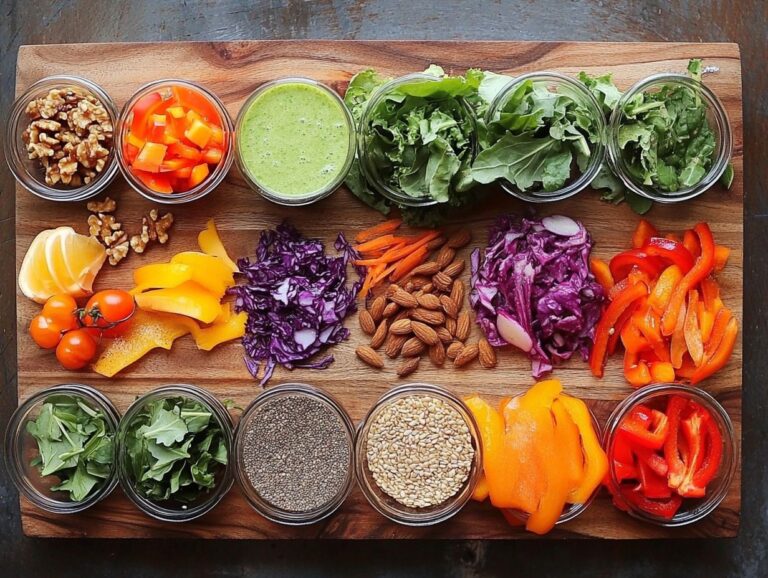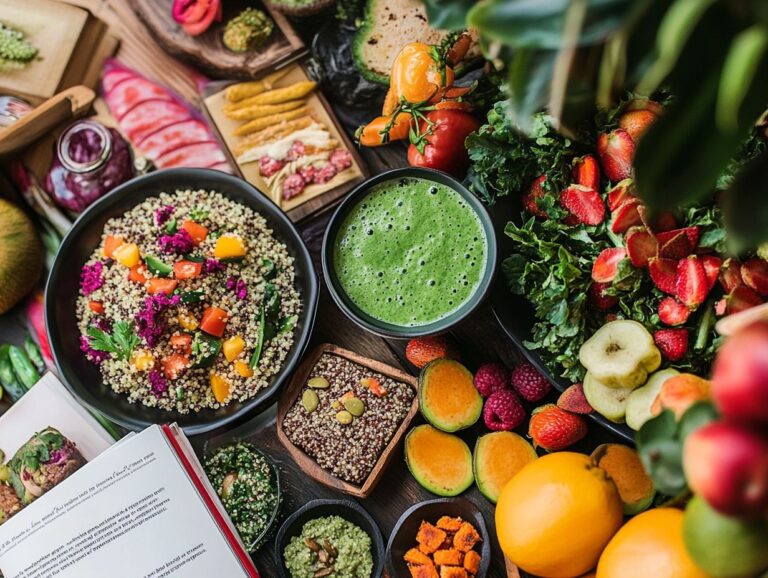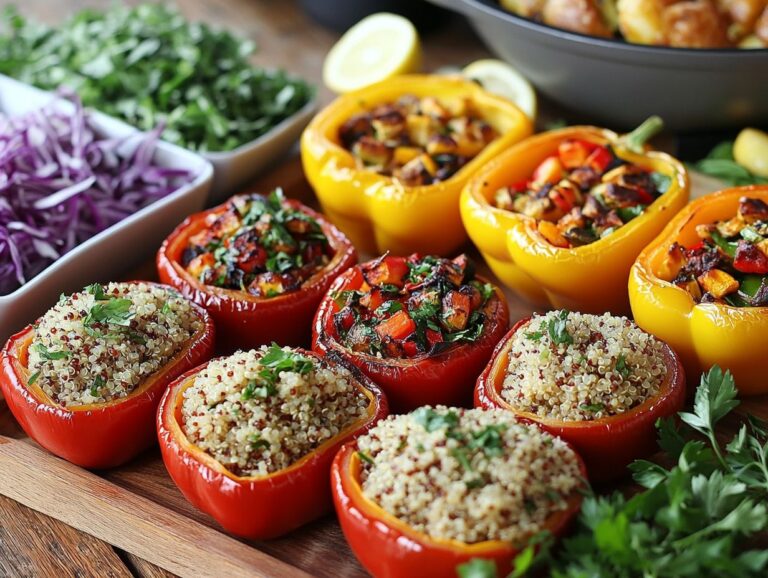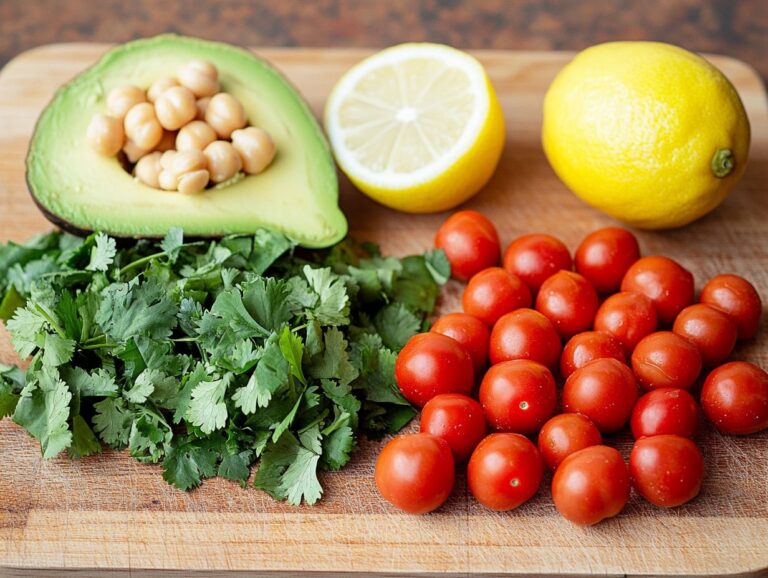Sauerkraut is a traditional fermented dish made from cabbage that is rich in nutrients and has been a dietary staple in many cultures for centuries, particularly those that emphasize plant-based and vegetarian diets. This superfood offers numerous health benefits, particularly for gut health, digestive health, and immunity, thanks to its high probiotic and fiber content. The nutritional advantages of sauerkraut are explored, along with a variety of delicious vegan recipes and meal ideas that range from traditional preparations to innovative and complex dishes that utilize simple ingredients and seasonal vegetables. Additionally, suggestions on how to use and serve sauerkraut as versatile toppings for salads, sandwiches, and more are provided. Finally, the text includes instructions for making homemade sauerkraut at home using easy-to-make methods with fermentation jars and simple ingredients.
What is Sauerkraut?
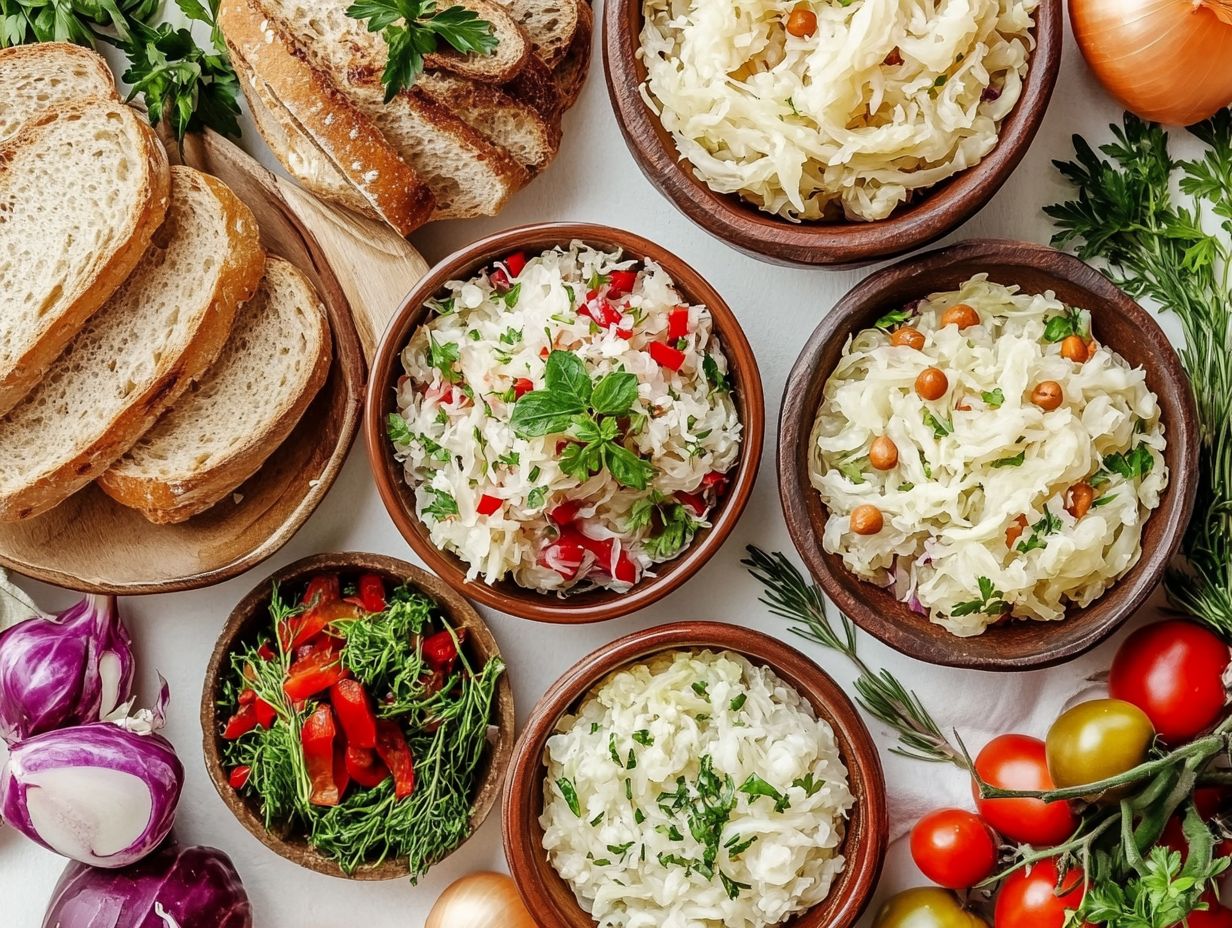
Sauerkraut is a traditional fermented food made from finely shredded cabbage, known for its rich probiotic content, numerous nutrients, and natural preservation qualities that make it a gut-friendly choice. This healthy food preservation technique is a staple in many vegan and vegetarian diets, adding tangy flavor and zest to a wide variety of dishes, including side dishes and appetizers.
The fermentation process not only enhances the digestibility of sauerkraut but also increases its nutrient density, making it a crunchy, gut-friendly addition to meals that promotes digestive health and overall wellness.
Overview and Nutritional Benefits
Sauerkraut offers numerous nutritional benefits, including being a low-calorie source of probiotics, antioxidants, and dietary fiber that promotes gut health, as well as being rich in vitamins and minerals.
The probiotics found in sauerkraut are live bacteria created during the fermentation process, which contribute to a balanced gut microbiome. This fermentation process also enhances the nutrient content of sauerkraut, providing vitamins C, K, and B, along with essential minerals such as potassium, iron, and magnesium, all of which are important for immunity and the proper function of muscles and nerves.
Incorporating nutrient-dense fermented foods like sauerkraut is vital for maintaining a balanced vegan diet and minimizing deficiencies.
Vegan Sauerkraut Recipes
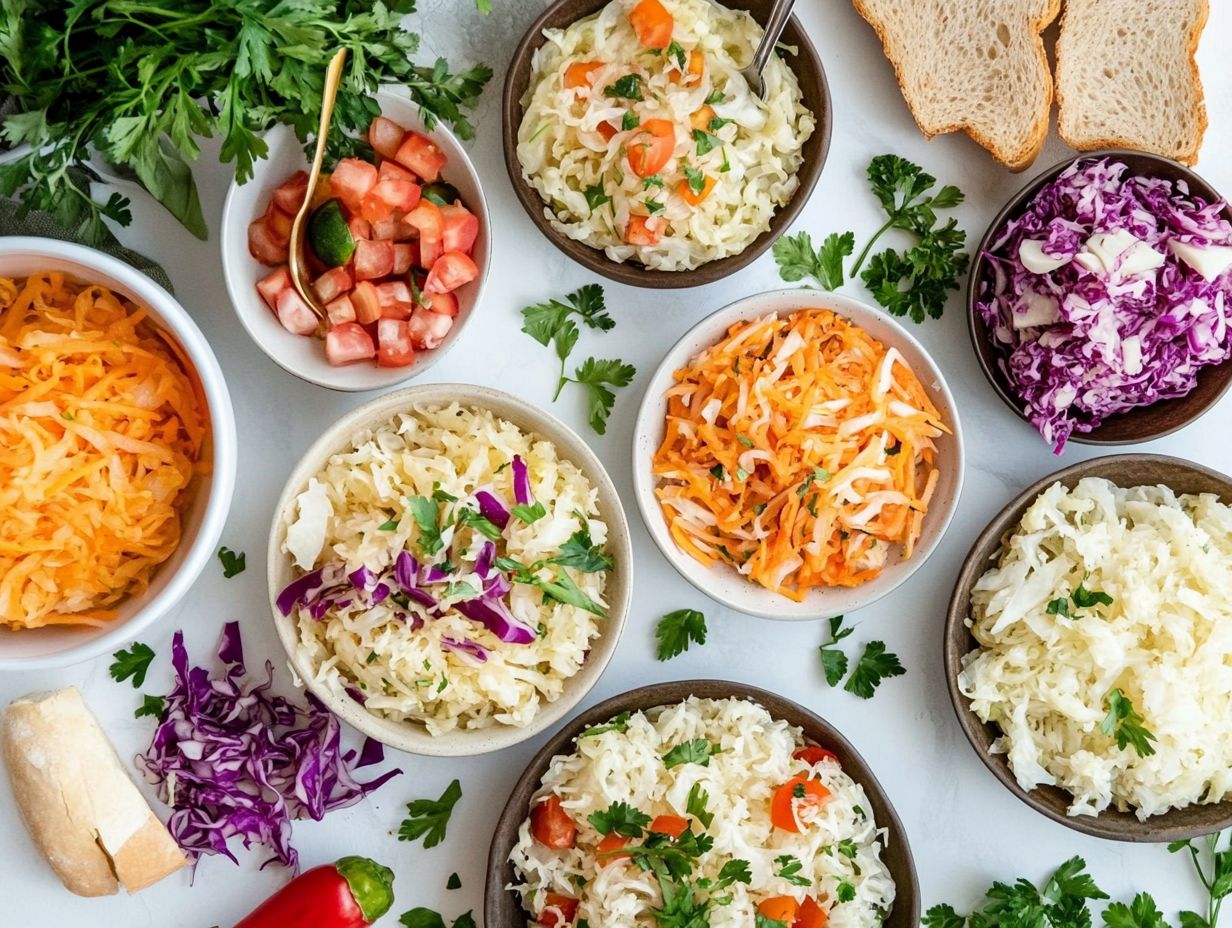
Vegan sauerkraut recipes showcase the taste and nutritional benefits of sauerkraut while demonstrating its versatility in vegan cooking and meal prep. Ranging from simple homemade versions to gourmet variations, these easy and quick recipes encourage creative culinary exploration and food blogging that can be tailored to suit all palates.
The flavor-enhancing qualities and probiotic properties of sauerkraut are best appreciated when it is prepared with seasonal ingredients and fresh herbs, making it a perfect fit for a health-promoting eating pattern.
Traditional and Creative Variations
Traditional sauerkraut recipes typically feature a classic combination of cabbage, salt, and spices, resulting in a product that is rich in flavor and texture.
More experimental variations offer exciting twists by incorporating a diverse range of ingredients, such as mustard seeds, garlic, or even spicy peppers, allowing for a deeper exploration of flavor profiles and culinary arts within various ethnic cuisines.
The diversity of regional preparations showcases how different cultures put their unique spin on this fermented staple. For instance, in Germany, juniper berries are commonly added for their distinct aromatic flavor, while in Eastern Europe, caraway seeds are favored for their warm, earthy nuances.
Exploring these traditional, cultural recipes enhances our understanding of the dish and paves the way for innovative adaptations that align with current food trends.
Examples of such adaptations in vegan cooking include:
- Substituting green cabbage for red cabbage to introduce extra color and sweetness,
- Adding fruits like apples or cranberries or using apple cider vinegar for a sweet-and-sour flavor,
- Incorporating herbs like dill and fennel, and using local ingredients to enhance seasonal flavors.
All of which encourage adventurous home cooks to experiment with their own sauerkraut recipes.
Health Benefits of Sauerkraut
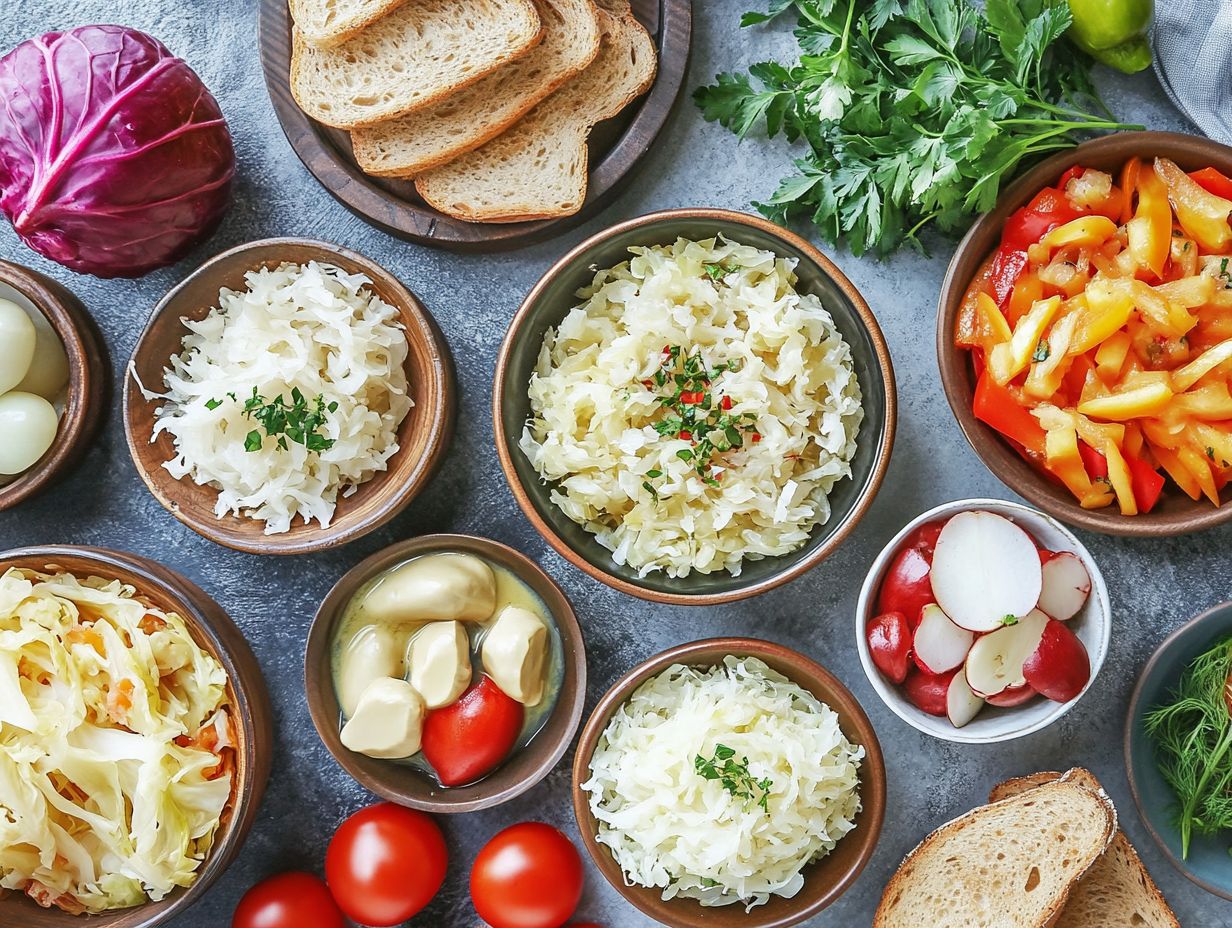
The health benefits of sauerkraut primarily arise from its high probiotic and prebiotic content, which plays a crucial role in promoting gut health, aiding the digestive process, and enhancing nutrient absorption when incorporated into the diet.
Regular consumption of this fermented dish can enhance overall wellness, as it is a nutrient-rich, low-calorie food that supports immune health and supplies the body with essential vitamins and minerals, including vitamin C and zinc.
Gut Health and Immune System Boost
Sauerkraut’s rich probiotic content plays a crucial role in maintaining gut health and fostering a balanced microbiome, which directly influences the immune system.
This nutrient-dense food provides antioxidants that help combat inflammation, making it a valuable addition to a health-conscious diet aimed at enhancing overall well-being.
Individuals can easily incorporate sauerkraut into a balanced vegan diet by adding a small serving to salads, wraps, or sandwiches.
The live cultures present in this fermented vegetable not only promote digestive efficiency but also modulate immune responses, thereby enhancing the body’s ability to ward off illnesses.
It is important to choose unpasteurized varieties to ensure that the probiotics remain active. Additionally, pairing sauerkraut with other plant-based foods rich in vitamins and minerals can further strengthen the immune system, making it a powerful ally in maintaining holistic health.
How to Incorporate Sauerkraut into Your Diet

Incorporating sauerkraut into your diet is both easy and delicious, as its tangy flavor pairs well with a variety of foods and meal ideas, making it a gluten-free and dairy-free option that aligns with veganism.
You can enjoy sauerkraut in several ways:
- served alongside soup
- mixed into a wrap
- as a crunchy topping for salads and sandwiches
This nutritious, gut-friendly ingredient is an excellent addition to a vegan diet and promotes gut health, making it a satisfying choice for health-conscious individuals.
Tips and Ideas for Enjoying Sauerkraut
Sauerkraut can be enjoyed in a variety of creative ways, serving as a delicious topping, a main ingredient in salads, or a tangy addition to soups and sandwiches. Its low-calorie nature and unique crunchy texture enhance the flavor of plant-based meals while providing added nutrition and antioxidants to one’s diet.
For instance, sauerkraut can be added to tacos, where its crunch complements spicy fillings, or included in grain bowls and entrees for an exciting burst of flavor. It can also be incorporated into stews and similar dishes, allowing the flavorful broth to absorb its sour taste.
Additionally, sauerkraut pairs well with fruits like apples, and various spices can be added to balance its natural acidity and enhance its umami taste. Surprisingly, sauerkraut can even be enjoyed at breakfast as part of a breakfast burrito.
Making Your Own Sauerkraut at Home
Home fermentation of sauerkraut is a rewarding project that enables you to customize flavors and ingredients while offering a chance to learn and practice fermentation skills, making use of healthy cooking techniques and food safety protocols.
This straightforward lacto-fermentation process transforms fresh cabbage into a delicious, crunchy condiment that boasts health benefits, all while ensuring food safety through the use of proper techniques and kitchen tools, such as fermentation jars.
Step-by-Step Instructions and Tools Needed
To make sauerkraut, you will need fresh cabbage, salt, a fermentation vessel, and an understanding of pickling and brine techniques. Following a step-by-step process is essential to achieve the proper flavor and texture while ensuring food safety standards during fermentation, which is a key aspect of culinary arts and natural preservation. Using high-quality organic cabbage and seasonal vegetables is crucial, as the quality of the ingredients significantly impacts the final product and aligns with sustainable practices.
- The first step is to wash the necessary kitchen tools, including a sharp knife or mandoline, a cutting board, and a mixing bowl, to ensure they are free from contaminants.
- Next, shred the cabbage into thin strips using either a knife or mandoline, placing the shredded cabbage into a wide mixing bowl.
- Combine the shredded cabbage with salt, which helps draw out moisture and initiates the fermentation process.
- Then, transfer the cabbage mixture into the fermentation vessel, packing it down tightly. Be sure to leave a few inches of headspace to accommodate any overflow of brine during fermentation.
- Finally, regularly check the temperature and brine level to ensure they remain within the ideal ranges for successful sauerkraut fermentation, which is essential for maintaining the probiotic activity and flavor enhancement.
